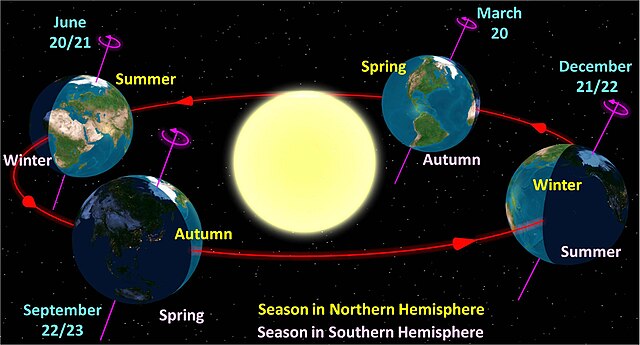A solar equinox is a moment in time when the Sun crosses the Earth's equator, which is to say, appears directly above the equator, rather than north or south of the equator. On the day of the equinox, the Sun appears to rise "due east" and set "due west". This occurs twice each year, around 20 March and 23 September.
The relation between the Earth, Sun, and stars at the March equinox. From Earth's perspective, the Sun appears to move along the ecliptic (red), which is tilted compared to the celestial equator (white).
Diagram of the Earth's seasons as seen from the north. Far right: December solstice.
Diagram of the Earth's seasons as seen from the south. Far left: June solstice.
Earth at the September 2022 equinox
The equator is a circle of latitude that divides a spheroid, such as Earth, into the Northern and Southern hemispheres. On Earth, the Equator is an imaginary line located at 0 degrees latitude, about 40,075 km (24,901 mi) in circumference, halfway between the North and South poles. The term can also be used for any other celestial body that is roughly spherical.
Road sign marking the equator near Nanyuki, Kenya
The equator marked as it crosses Ilhéu das Rolas, in São Tomé and Príncipe
The Marco Zero monument marking the equator in Macapá, Brazil
GPS reading taken on the Equator close to the Quitsato Sundial, in Cayambe, Ecuador








